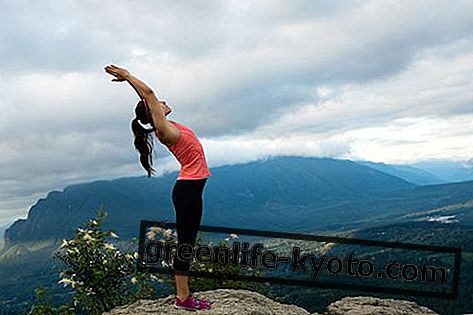
The cervical or, more correctly, cervicalgia is a problem that, at least once in life, affects 2/3 of the world population .
The long hours spent sitting at school or in the office, on the books or in front of a screen, or at home in front of the television or with a mobile phone in hand, certainly do not help.
But above all it is the lack of awareness that we place in the area of the neck that makes the difference, often we do not perceive the signals and we realize too late when it is already desensitized for bad blood circulation or is already contracted, and therefore painful, for an incorrect pose.
We get to the point where the wrong position no longer hurts but, on the contrary, we experience pain and discomfort during rotational movements that would be normal.
Yoga to help the cervical
Yoga, like other similar disciplines, can undoubtedly help treat the cervical .
First of all, a controlled breathing accompanied by a correct relaxation will help us to become aware of the small asymmetries that have become chronic, of the relationship between the cervical vertebrae and the rest of the back, and of all the micro-contractures to be re-educated.
Specific asana exercises such as brahma mudra or sasha mudra can help in this sense. Even balasana, svanasana, uttanasana, if practiced regularly, can counterbalance the damage to the neck that a wrong lifestyle entails.
The asanas are contraindicated in case of cervical
It must also be said, however, that not all hatha yoga asanas are favorable in case of cervical, indeed, some of these are definitely to be avoided due to the excessive pressure exerted on the tendons, muscles or vertebrae of an already problematic neck.
We can easily speak in this case of contraindications .
> Padangusthasana or hallux position
This is a position that is performed from standing up, and partly by bending the upper part of the body forward while maintaining both the back and the legs straight. Once you grab your toes, climb up with your back and bend your neck looking forward.
In the case of cervical, this last movement is inconvenient, also given the important flow of blood that reaches the neck going upside down.
> Paripurna Navasana or boat position
It is a position that is performed from lying on your back. It bends the body trying to stay straight and balanced on the coccyx.
Also in this case the neck bends forward, generating a lot of tension and a continuous series of micro-movements given by the instability of the position.
This position brings contraction to the neck, something to be avoided in case of contractions already present.
> Dhanurasana or bow position
Not easy to execute, in the position of the arch the ankles are grasped from behind, arching the back and remaining balanced on the pelvis.
As above, even here the stress on the backs and the neck are unsuitable in the case of the cervical, as the muscles of the entire back must contract and extend the contraction even to those of the neck.
> Ustrasana or camel position
In this position it happens more or less precisely what we have described for the position of the bow, only that we will not be balanced on our pelvis but on the knees and on the toes.
> Matsyasana or fish position
Lying down with your legs stretched out or crossed in a lotus position, we will bend the head backwards resting its apex on the ground, arching the neck strongly backwards, with all the pressure that this posture entails. Definitely to be avoided.













